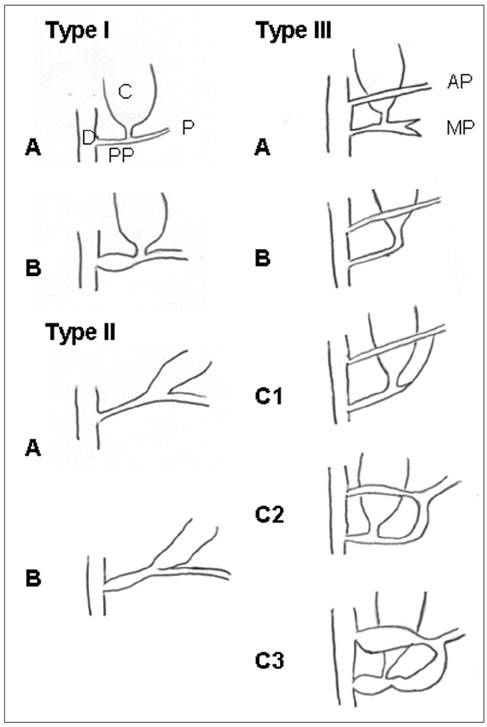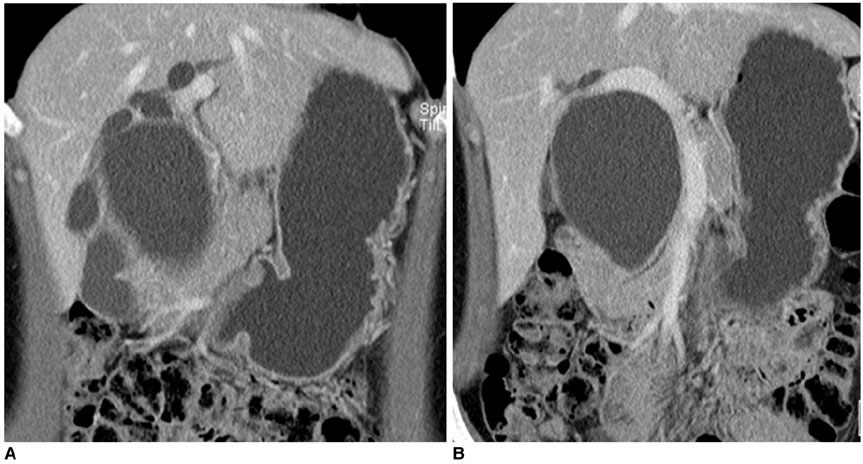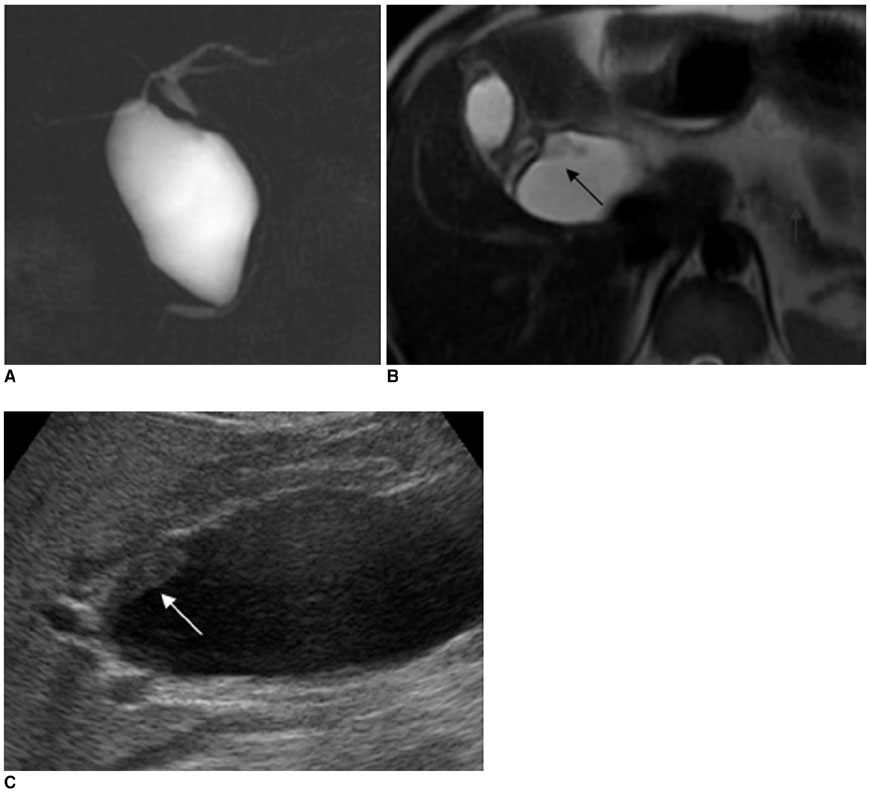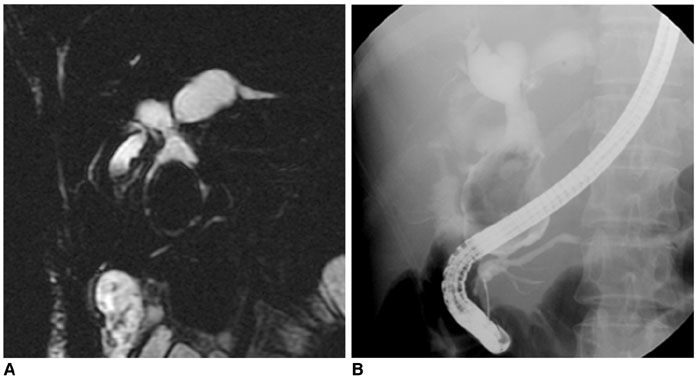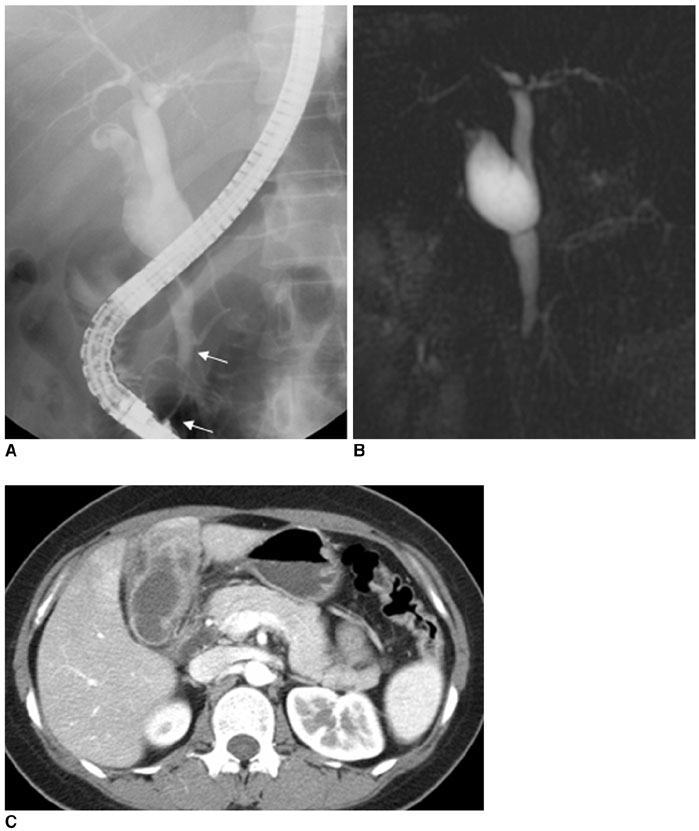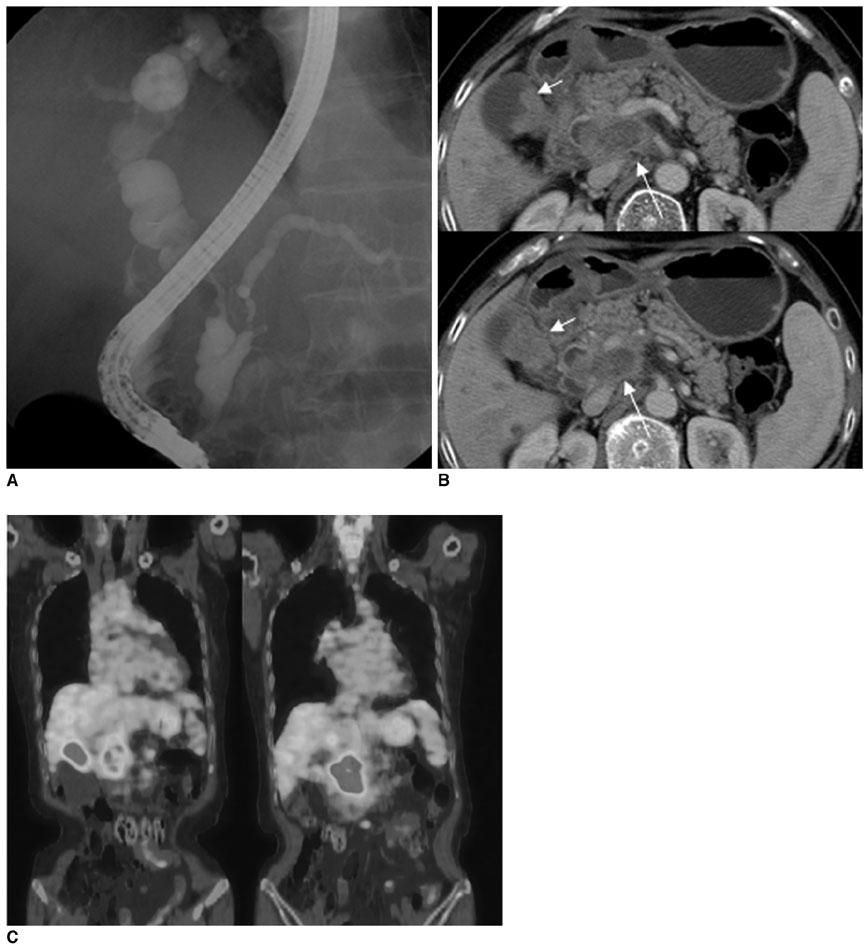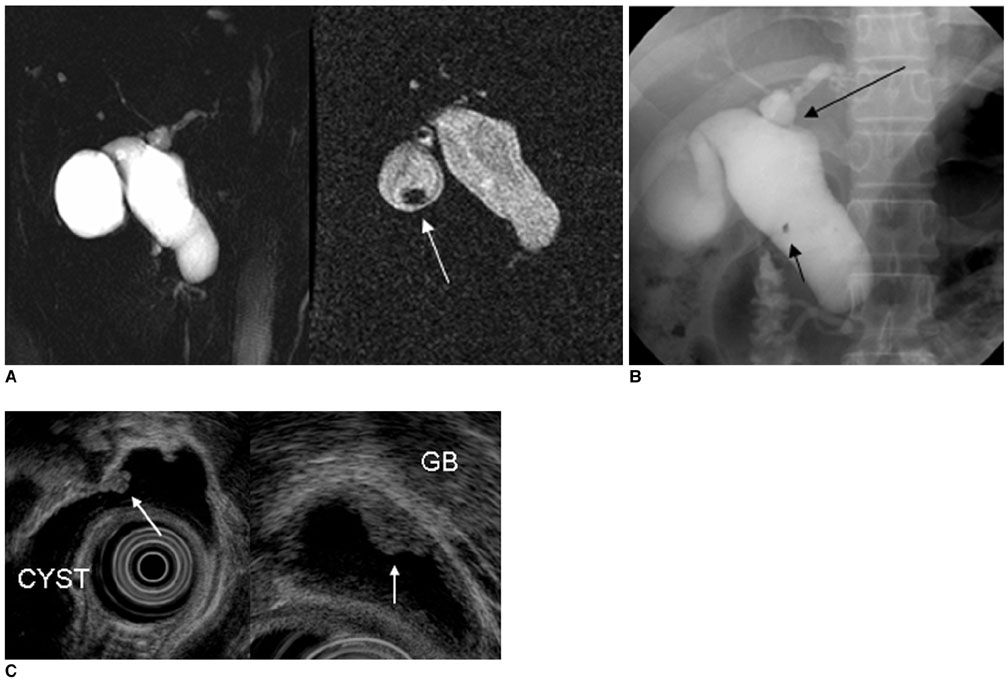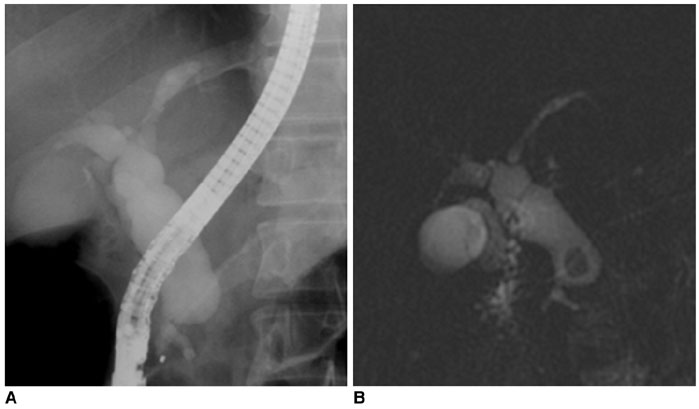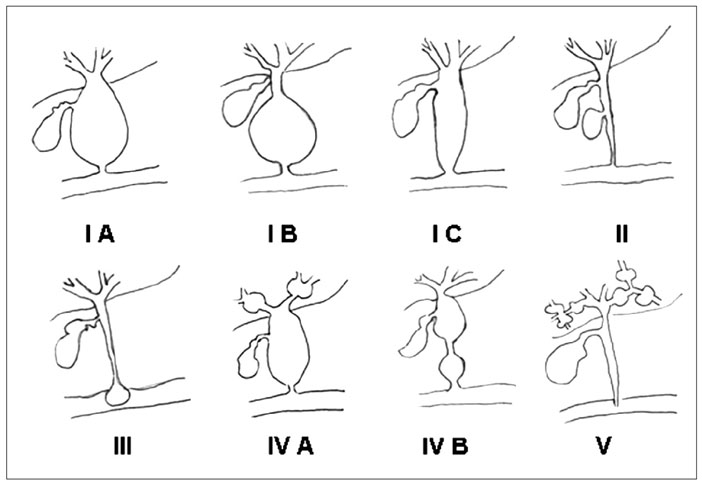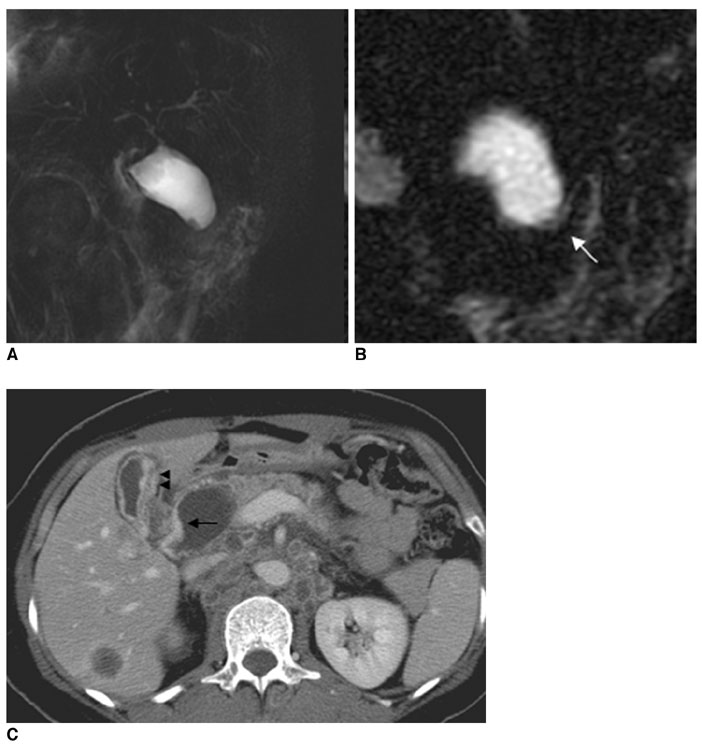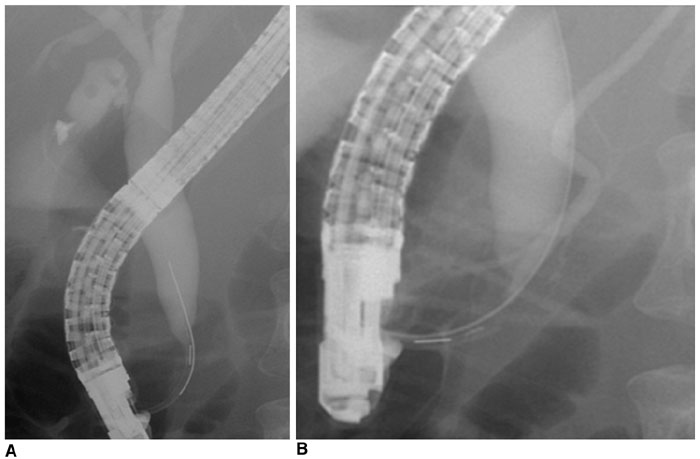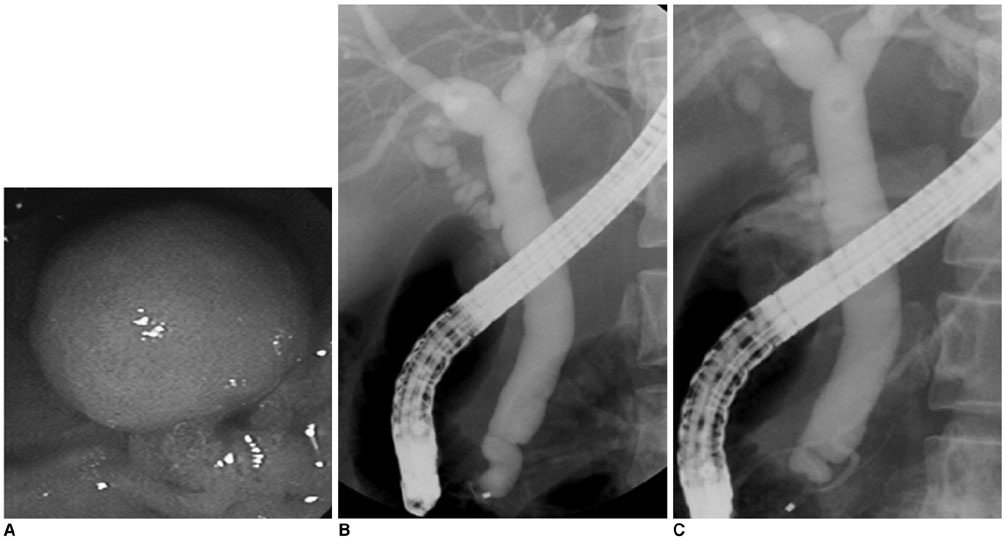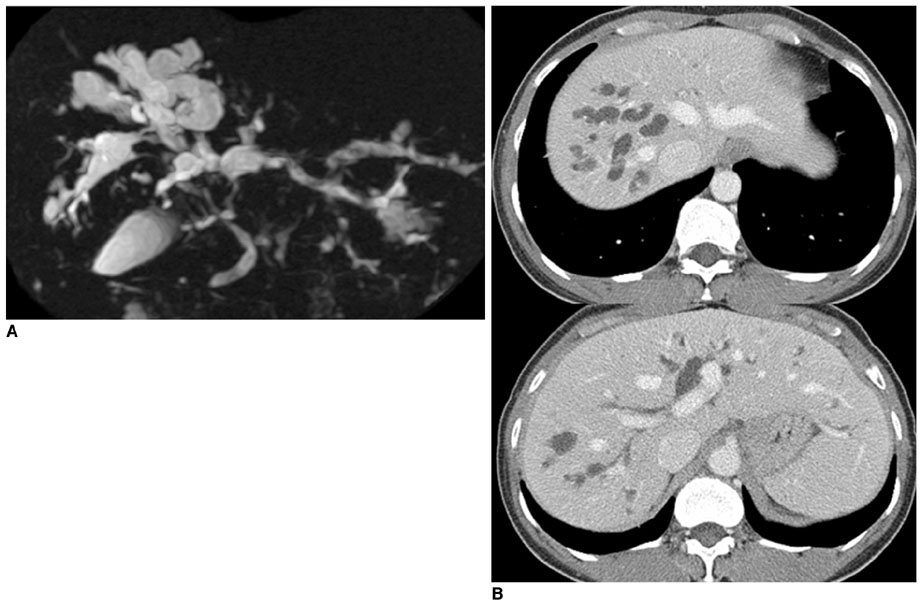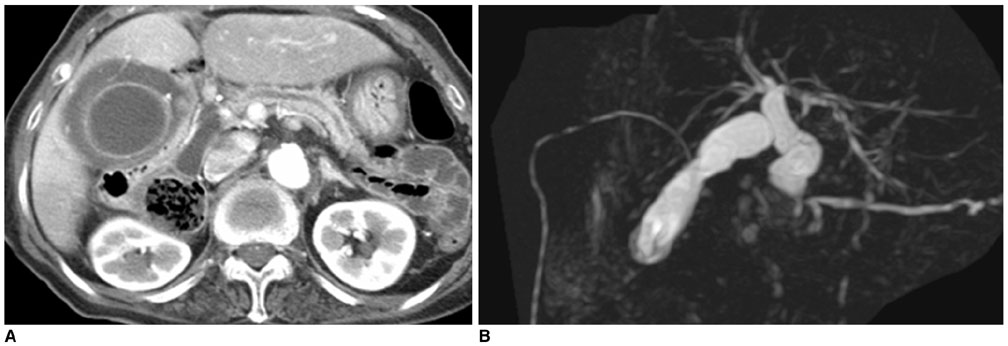Korean J Radiol.
2009 Feb;10(1):71-80. 10.3348/kjr.2009.10.1.71.
Imaging Features of Adult Choledochal Cysts: a Pictorial Review
- Affiliations
-
- 1Department of Radiology, College of Medicine, Soonchunhyang University Bucheon Hospital, Gyunggi-do, Korea. hklee@schbc.ac.kr
- 2Department of Gastroenterology, College of Medicine, Soonchunhyang University Bucheon Hospital, Gyunggi-do, Korea.
- 3Department of Radiology, College of Medicine, Soonchunhyang University Seoul Hospital, Seoul, Korea.
- KMID: 1088681
- DOI: http://doi.org/10.3348/kjr.2009.10.1.71
Abstract
- Choledochal cysts are rare congenital anomalies which are principally diagnosed by disproportional dilatation of the extrahepatic bile ducts. In addition, choledochal cysts are believed to arise from the anomalous union of the common bile duct and pancreatic duct outside the duodenal wall which is also proximal to the sphincter of the Oddi mechanism. The various types of choledochal cysts have been classified on the basis of these anomalous unions (Komi classification) and their anatomical locations (Todani classification). The multidetector computed tomography with reformatted imaging, magnetic resonance cholangiopancreatography, and an endoscopic retrograde cholangiography represent the important techniques providing the anatomical resolution and detail required to properly diagnose and classify choledochal cysts and their associated abnormal features of the biliary tree, as well as their pancreaticobile duct union. This study describes the various imaging features of a choledochal cyst in adults according to the various types of anomalous unions of the pancreaticobile duct according to Komi's classification and anatomic location according to Todani's classification. Lastly, we also review and discuss the associated abnormal findings developed in biliary systems.
Keyword
MeSH Terms
Figure
Reference
-
1. Wiseman K, Buczkowski AK, Chung SW, Francoeur J, Schaeffer D, Scudamore CH. Epidemiology, presentation, diagnosis, and outcomes of choledochal cysts in adults in an urban environment. Am J Surg. 2005. 189:527–531.2. Liu CL, Fan ST, Lo CM, Lam CM, Poon RT, Wang J. Choledochal cysts in adults. Arch Surg. 2002. 137:465–468.3. Visser BC, Suh I, Way LW, Kang SM. Congenital choledochal cysts in adults. Arch Surg. 2004. 139:855–862.4. Liu YB, Wang JW, Devkota KR, Ji ZL, Li JT, Wang XA, et al. Congenital choleochal cysts in adults: twenty-five-year experience. Chin Med J. 2007. 120:1404–1407.5. Park DH, Kim MH, Lee SK, Lee SS, Choi JS, Lee YS, et al. Can MRCP replace the diagnostic role of ERCP for patients with choledochal cysts? Gastrointest Endosc. 2005. 62:360–366.6. Sugiyama M, Haradome H, Takahara T, Abe N, Tokuhara M, Masaki T, et al. Anomalous pancreaticobiliary junction shown on multidetector CT. AJR Am J Roentgenol. 2003. 180:173–175.7. Sugiyama M, Atomi Y. Endoscopic ultrasonography for diagnosing anomalous pancreaticobiliary junction. Gastrointest Endosc. 1997. 45:261–267.8. Babbitt DP, Starshak RJ, Clemett AR. Choledochal cysts: a concept of etiology. Am J Roentgenol Radium Ther Nucl Med. 1973. 119:57–62.9. Iwai N, Yanagihara J, Tokiwa K, Shimotake T, Nakamura K. Congenital choledochal dilatation with emphasis on pathophysiology of the biliary tract. Ann Surg. 1992. 215:27–30.10. Metcalfe MS, Wemyss-Holden SA, Maddern GJ. Management dilemmas with choledochal cysts. Arch Surg. 2003. 138:333–339.11. Komi N, Takehara H, Kunitomo K, Miyoshi Y, Yagi T. Does the type of anomalous arrangement of pancreaticobiliary ducts influence the surgery and prognosis of choledochal cyst? J Pediat Surg. 1992. 27:728–731.12. Todani T, Watanabe Y, Narusue M, Tabuchi K, Okajima K. Congenital bile duct cysts: classification, operative procedures, and review of thirty-seven cases including cancer arising from choledochal cyst. Am J Surg. 1997. 134:263–269.13. Todani T, Watanabe Y, Toki A, Morotomi Y. Classification of congenital biliary cystic disease: special reference to type Ic and IVA cysts with primary ductal stricture. J Hepatobiliary Pancreat Surg. 2003. 10:340–344.14. Fieber SS, Nance FC. Choledochal cyst and neoplasm: a comprehensive review of 106 cases and presentation of two original cases. Am Surg. 1997. 63:982–987.15. Elnemr A, Ohta T, Kayahara M, Kitagawa H, Yoshimoto K, Tani T, et al. Anomalous pancreaticobiliary ductal junction without bile duct dilatation in gallbladder cancer. Hepatogastroenterology. 2001. 48:382–386.
- Full Text Links
- Actions
-
Cited
- CITED
-
- Close
- Share
- Similar articles
-
- Anomalous junction of pancreaticobiliary ductal system(AJPBDS) in adult choledochal cysts
- Choledochal Cyst Associated with Cystic Duct Dilatation: Report of Three Cases
- Infantile Type Choledochal Cyst with Biliary Atresia: Report of two cases
- A Case Report of Choledochal Cyst
- A Case of Rupture of Choledochal Cyst during Pregnancy

